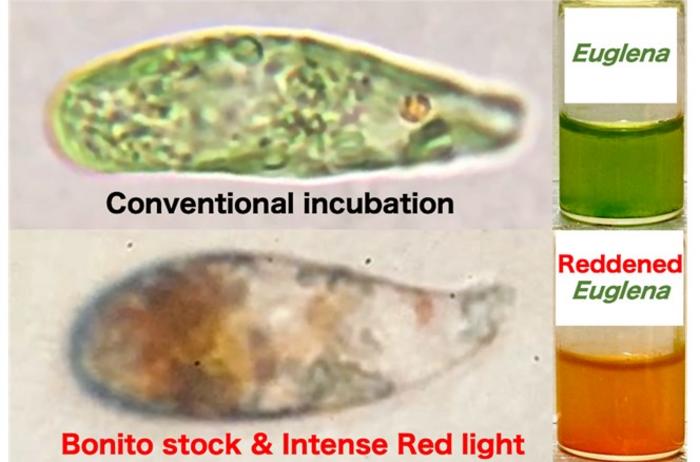Over the past few years, people have generally become more conscious about the food they consume. Thanks to easier access to information as well as public health campaigns and media coverage, people are more aware of how nutrition ties in with both health benefits and chronic diseases. As a result, there is an ongoing cultural shift in most countries, with people prioritizing eating healthily. In turn, the demand for healthier food options and nutritional supplements is steadily growing.

Credit: Cannot be reused without permission
Over the past few years, people have generally become more conscious about the food they consume. Thanks to easier access to information as well as public health campaigns and media coverage, people are more aware of how nutrition ties in with both health benefits and chronic diseases. As a result, there is an ongoing cultural shift in most countries, with people prioritizing eating healthily. In turn, the demand for healthier food options and nutritional supplements is steadily growing.
In line with these changes, Assistant Professor Kyohei Yamashita from Tokyo University of Science (TUS), Japan, has been studying a promising “superfood” called Euglena gracilis for over half a decade. A species of edible microalgae, E. gracilis has a rich nutritional profile, with a unique combination of vitamins, fibers, lipids, and proteins. Like most other photosynthetic plants, E. gracilis also contains carotenoids—natural substances with a wide variety of health benefits.
In a study published in 2023, a research team from TUS found a simple method to efficiently grow E. gracilis in an inexpensive medium (solid or liquid that contains nutrients and is used to grow bacteria) based on tomato juice. Now, in a new study, the researchers have explored a promising technique to make cultured E. gracilis produce carotenoids at a higher rate, rendering it even more nutritious. This study, which was co-authored by Dr. Kengo Suzuki from Euglena Co., Ltd., as well as Professor Tatsuya Tomo and Professor Eiji Tokunaga from TUS, was published in Volume 13, Issue 4 of the journal Plants in February 12, 2024.
The proposed approach is quite straightforward, and so is its rationale. When a plant is exposed to high-intensity light for extended periods of time, it undergoes a light-stress response. This, in turn, can cause the organism to produce molecules that protect it from further light exposure, including carotenoids. Based on these facts, the researchers investigated whether they could induce such a reaction in E. gracilis to enhance its carotenoid content ratio.
To this end, the team ran a series of experiments on multiple batches of cultured E. gracilis. They exposed cultures to light of different wavelengths (or colors) and at different intensities looking for a “reddening reaction,” which is a tell-tale sign of higher carotenoid production in many plant species. Moreover, they also tested a new culture medium based on bonito stock, a soup stock extracted from Katsuobushi, a traditional Japanese dish made from smoked bonito fish.
Interestingly, the researchers found that strong red-light irradiation at 605–660 nm triggered a reddening reaction in E. gracilis when cultured in bonito stock. They also looked at the chemical profiles of the cultures using high-performance liquid chromatography, both at the culture and single-cell level. These analyses revealed that reddened cells not only had a high concentration of diadinoxanthin, the most abundant carotenoid in E. gracilis, but also produced an unidentified xanthophyll-type carotenoid. On top of these, the team also noted that bonito stock cultures grew quicker and reached higher densities than cultures grown on conventional media, and likely produced more types or amounts of carotenoids.
Together, the results of this study could pave the way for an innovative and easily scalable technique for growing nutritious E. gracilis. The method’s simplicity is certainly one of its strengths, as Dr. Yamashita remarks, “Our approach does not involve genetic modifications and could thus be readily adopted by the food industry to expand the use of E. gracilis, both in food and as a nutritional supplement.” Notably, bonito stock is a nutritious food and using it in the culture medium would, therefore, provide additional health benefits.
Aside from its benefits to us humans, growing E. gracilis can also help the environment. “E. gracilis cultivation, which requires relatively few resources, can be a sustainable food resource,” explains Dr. Yamashita. “Our research marks an important step toward the development of new food technologies that contribute to people’s lives from both health and environmental perspectives.”
With the carotenoid market poised to become a multi-billion-dollar industry by 2030, this study will help deepen our understanding of carotenoid biosynthetic pathways, hopefully leading to the development of sustainable practices in the production of nutritional supplements and emerging foods.
****
Reference
Authors: Kyohei Yamashita1, Ryusei Hanaki2, Ayaka Mori1, Kengo Suzuki3, Tatsuya Tomo2, and Eiji Tokunaga1
Affiliations:
1Department of Physics, Faculty of Science Division I, Tokyo University of Science
2Graduate School of Science, Tokyo University of Science
3Euglena Co., Ltd.
Funding information
This research was supported by JSPS KAKENHI grant No. 21K06101.
Journal
Plants
Method of Research
Experimental study
Subject of Research
Cells
Article Title
Reddening of the Unicellular Green Alga Euglena gracilis by Dried Bonito Stock and Intense Red Light Irradiation
Article Publication Date
12-Feb-2024
COI Statement
Author Kengo Suzuki was employed by the company Euglena Co., Ltd. The remaining authors declare that the research was conducted in the absence of any commercial or financial relationships that could be construed as a potential conflict of interest.



